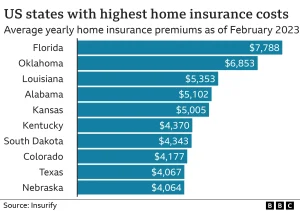
Studies have consistently demonstrated a correlation between stock market volatility and cross-market correlations and exchange rate fluctuations; however, their cause remains elusive. This paper investigates the role exchange rates play in international stock market fundamentals and tests for unidirectional causation.
In the 1970s, globalization brought with it unprecedented synchronization across world stock markets. This period lasted until 2020 when COVID-19 caused its decline.
Correlations between currencies
Currency pairs often show short-term correlation, yet this relationship often does not remain constant over longer periods. For instance, EUR/USD and GBP/USD both exhibit positive correlation of 0.95 over one month; however, only 0.66% correlation after six months – figures which apply similarly across various currency pairs.
Currencies have an intricate relationship with other asset classes, particularly commodities. For instance, USD/CAD shows a strong negative correlation with oil prices due to Canada being one of the major crude exporters. Other commodity currencies, including AUD/USD and NZD/USD also exhibit this phenomenon.
Stock market indices do not necessarily correlate with currency pairs, as opposed to being linked together or other markets that have higher liquidity. Investors use stock indices as a reference when making trading decisions rather than currency prices when making trade decisions; this phenomenon is especially prominent in mature markets with high transaction volumes and home bias among many investors who only invest assets located in their home countries.
Correlations between stock markets
Stock markets and currency pairs are inextricably linked. A strong stock market attracts investors, which in turn raises the value of local currency while weak stock markets cause it to depreciate. Individual investors can influence stocks and currencies through changing strategies during times of risk-on or risk-off investing strategies; for example, rising interest rates make one country’s currency more valuable while decreasing demand for its stocks.
Recently, correlations between stocks and currency markets have been decreasing for various reasons, such as supply chain disruptions or geopolitical tensions. COVID-19 tariff disputes could also be driving inflation higher and increasing monetary policy volatility.
The correlation between stock and currency markets can change over time, depending on each country’s sensitivity to the common stock factor. A currency from a nation that has higher sensitivity will appreciate/depreciate when global stocks rise/fall; conversely, those that have less sensitivity may depreciate/appreciate when global stocks decline/rise – this effect can be seen clearly on detrended cross-correlation analysis chart below.
Correlations between indices
Investors and policymakers care deeply about correlations as they can have a major effect on portfolio performance and decision-making. A rising stock market can often lead to an appreciation in national currencies; for instance, strong Nikkei index results in weaker USD. But investors and policymakers must remember that correlations do not always remain constant over time.
Correlations can fluctuate over time, and become especially volatile during times of crisis. Investors tend to shift focus toward riskier markets such as stocks and commodity currencies that may also be influenced by geopolitical issues and supply chain disruptions.
However, correlations among indices tend to remain stable over longer periods. For instance, EUR/USD and GBP/USD correlation has remained strong over one year; similarly for USD/CHF and USD/CAD pairs; although their correlation has slightly declined recently; perhaps due to increased oil market volatility as well as the Bank of Canada’s hawkishness.
Correlations between countries
Correlations between countries and stock markets should be monitored closely, as their dynamics frequently shift depending on various influences. Currency considerations, local economic and political considerations and expectations about global economics all play an influential role. Furthermore, correlations can change day-by-day; therefore, focusing on average six month correlations rather than specifically looking for strong ones is best practice.
Investors can diversify by grouping markets into clusters based on economic development level and geographical position. This approach reveals natural local-return correlations driven by global risk factors; developed-market Americas has the highest intra-cluster correlation, followed by Europe and emerging-market EMEA markets – this indicates the risks of investing across regions are linked. Correlations tend to decrease after shocks as different nations work to resist and recover from market-wide uncertainty.







